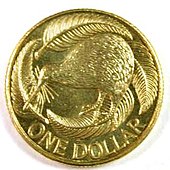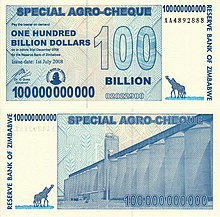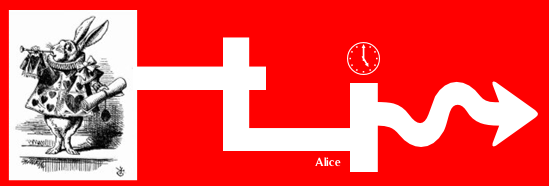Dollar
From Wikipedia, the free encyclopedia
"Dolar" redirects here. For the Slovenian philosopher, see Mladen Dolar. For the municipality in Spain, see Dólar.
For other uses, see Dollar (disambiguation).

A United States two-dollar bill. Rarely seen in circulation, but still legal tender.
Contents
History
On 15 January 1520, the kingdom of Bohemia began minting coins from silver mined locally in Joachimsthal. The coins were called "Joachimsthaler," which became shortened in common usage to thaler or taler. The German name Joachimsthal literally means Joachim's valley or Joachim's dale. This name found its way into other languages: Czech tolar, Hungarian tallér, Danish and Norwegian (rigs) daler, Swedish (riks) daler, Icelandic dalur, Dutch (rijks)daalder or daler, Ethiopian ታላሪ ("talari"), Italian tallero, Flemish daelder, Polish Talar, Persian Dare, as well as - via Dutch - into English as dollar.A later Dutch coin depicting a lion was called the leeuwendaler or leeuwendaalder, literally 'lion daler'. The Dutch Republic produced these coins to accommodate its booming international trade. The leeuwendaler circulated throughout the Middle East and was imitated in several German and Italian cities. This coin was also popular in the Dutch East Indies and in the Dutch New Netherland Colony (New York). It was in circulation throughout the Thirteen Colonies during the 17th and early 18th centuries and was popularly known as lion (or lyon) dollar.[1][2] The modern American-English pronunciation of dollar is still remarkably close to the 17th century Dutch pronunciation of daler.[3] Some well-worn examples circulating in the Colonies were known as "dog dollars".[4]
Spanish pesos - having the same weight and shape - came to be known as Spanish dollars.[3][5] By the mid-18th century, the lion dollar had been replaced by Spanish dollar, the famous "piece of eight", which were distributed widely in the Spanish colonies in the New World and in the Philippines.[5][6][7][8][9]
Origins of the dollar sign
Main article: Dollar sign#Origin
The sign is first attested in business correspondence in the 1770s as a scribal abbreviation "ps", referring to the Spanish American peso,[10][11] that is, the "Spanish dollar" as it was known in British North America. These late eighteenth- and early nineteenth-century manuscripts show that the s gradually came to be written over the p developing a close equivalent to the "$" mark, and this new symbol was retained to refer to the American dollar as well, once this currency was adopted in 1785 by the United States.[12][13][14][15][16]Adoption by the United States
Main article: United States dollar
By the American Revolution, Spanish dollars gained significance because they backed paper money authorized by the individual colonies and the Continental Congress.[6] Common in the Thirteen Colonies, Spanish dollars were even legal tender in one colony, Virginia.On April 2, 1792, U.S. Secretary of the Treasury Alexander Hamilton reported to Congress the precise amount of silver found in Spanish milled dollar coins in common use in the States. As a result, the United States dollar was defined[17] as a unit of pure silver weighing 371 4/16th grains (24.057 grams), or 416 grains of standard silver (standard silver being defined as 1,485 parts fine silver to 179 parts alloy).[18] It was specified that the "money of account" of the United States should be expressed in those same "dollars" or parts thereof. Additionally, all lesser-denomination coins were defined as percentages of the dollar coin, such that a half-dollar was to contain half as much silver as a dollar, quarter-dollars would contain one-fourth as much, and so on.
In an act passed in January 1837, the dollar's alloy (amount of non-silver metal present) was set at 15%. Subsequent coins would contain the same amount of pure silver as previously, but were reduced in overall weight (to 412.25 grains). On February 21, 1853, the quantity of silver in the lesser coins was reduced, with the effect that their denominations no longer represented their silver content relative to dollar coins.
Various acts have subsequently been passed affecting the amount and type of metal in U.S. coins, so that today there is no legal definition of the term "dollar" to be found in U.S. statute.[19][20][21] Currently the closest thing to a definition is found in United States Code Title 31, Section 5116, paragraph b, subsection 2: "The Secretary [of the Treasury] shall sell silver under conditions the Secretary considers appropriate for at least $1.292929292 a fine troy ounce."
Silver was mostly removed from U.S. coinage by 1965 and the dollar became a free-floating fiat currency without a commodity backing defined in terms of real gold or silver. The US Mint continues to make silver $1-denomination coins, but these are not intended for general circulation.
Usage in Great Britain
There are many quotes in the plays of William Shakespeare referring to dollars as money. Coins known as "Thistle dollars" were in use in Scotland during the 16th and 17th century,[22] and use of the English word, and perhaps even the use of the coin, may have begun at the University of St Andrews.[citation needed] This might be supported by a reference to the sum of "ten thousand dollars" in Macbeth (Act I, Scene II) (an anachronism because the real Macbeth, upon whom the play was based, lived in the 11th century).In 1804, a British five-shilling piece, or crown, was sometimes called "dollar". It was an overstruck Spanish 8 real coin (the famous 'piece of eight'), the original of which was known as a Spanish dollar. Large numbers of these 8-real coins were captured during the Napoleonic Wars, hence their re-use by the Bank of England. They remained in use until 1811.[23] During World War II, when the U.S. dollar was (approximately) valued at 5 shillings, the half crown (2s 6d) became nicknamed a "half dollar" by US personnel in the UK.
Usage elsewhere
Chinese demand for silver in the 19th and early 20th centuries led several countries, notably the United Kingdom, United States and Japan, to mint trade dollars, which were often of slightly different weights from comparable domestic coinage. Silver dollars reaching China (whether Spanish, Trade, or other) were often stamped with Chinese characters known as "chop marks", which indicated that that particular coin had been assayed by a well-known merchant and determined genuine.Other national currencies called “dollar”

500 old Zimbabwean dollar bill of the first Zimbabwean dollar.
The term "dollar" has also been adopted by other countries for currencies which do not share a common history with other dollars. Many of these currencies adopted the name after moving from a £sd-based to a decimalized monetary system. Examples include the Australian dollar, the New Zealand dollar, the Jamaican dollar, the Cayman Islands dollar, the Fiji dollar, the Namibian dollar, the Rhodesian dollar, the Zimbabwe dollar, and the Solomon Islands dollar.
- The tala is based on the Samoan pronunciation of the word "dollar".
- The Slovenian tolar had the same etymological origin as dollar (that is, thaler).
Economies that use a dollar
Other territories that use a dollar
 Anguilla: East Caribbean dollar
Anguilla: East Caribbean dollar Bonaire (Netherlands): US dollar
Bonaire (Netherlands): US dollar British Indian Ocean Territory: US dollar (alongside the pound sterling)
British Indian Ocean Territory: US dollar (alongside the pound sterling) British Virgin Islands: US dollar
British Virgin Islands: US dollar Montserrat: East Caribbean dollar
Montserrat: East Caribbean dollar Saba (Netherlands): US dollar
Saba (Netherlands): US dollar Saint Pierre and Miquelon (France):Canadian dollar (alongside the euro)
Saint Pierre and Miquelon (France):Canadian dollar (alongside the euro) Sint Eustatius (Netherlands): US dollar
Sint Eustatius (Netherlands): US dollar Turks and Caicos Islands: US dollar
Turks and Caicos Islands: US dollar
Countries unofficially accepting a dollar
Countries and regions that have previously used the dollar
- Malaysia: the Malaysian ringgit used to be called the "Malaysian Dollar". The surrounding territories (that is, Malaya, British North Borneo, Sarawak, Brunei, and Singapore) used several varieties of dollars (for example, Straits dollar, Malayan dollar, Sarawak dollar, British North Borneo dollar; Malaya and British Borneo dollar) before Malaysia, Singapore and Brunei gained their independence from the United Kingdom. See also for a complete list of currencies.
- Spain: the Spanish dollar is closely related to the dollars and euros used today.
- Rhodesia: the Rhodesian dollar replaced the Rhodesian pound in 1970 and it was used until Zimbabwe came into being in 1980.
- Zimbabwe: once used the Zimbabwe dollar, but abolished it and now use the South African rand, the US dollar,[28] the Euro, the Pound sterling and the Botswana pula.
See also
References
- Jump up ^ http://books.google.nl/books?id=0j6GvkVvAGsC&lpg=PA490&dq=New%20York%20leeuwendaalder&hl=nl&pg=PA154#v=onepage&q=thaler&f=false
- Jump up ^ http://coins.lakdiva.org/netherlands/1644_wes_lion_daalder_ag.html
- ^ Jump up to: a b http://www.etymologiebank.nl/trefwoord/dollar
- Jump up ^ Lion Dollar — Introduction
- ^ Jump up to: a b http://books.google.nl/books?id=0j6GvkVvAGsC&lpg=PA490&dq=Dutch%20Daalder&hl=nl&pg=PA154#v=onepage&q=dutch%20daalder&f=false
- ^ Jump up to: a b Julian, R.W. (2007). All About the Dollar. Numismatist. p. 41.
- Jump up ^ Cross, Bill (2012). Dollar Default: How the Federal Reserve and the Government Betrayed Your Trust. pp. 17–18. ISBN 9781475261080.
- Jump up ^ National Geographic. June 2002. p. 1. Ask Us.
- Jump up ^ http://books.google.nl/books?id=1Wj22AJfmXgC&lpg=PA488&dq=negotiepenningen&hl=nl&pg=PA84#v=snippet&q=trade%20coins&f=false
- Jump up ^ Lawrence Kinnaird (July 1976). "The Western Fringe of Revolution," The Western Historical Quarterly 7(3), 259.
- Jump up ^ "Origin of Dollar Sign is Traced to Mexico", Popular Science 116 (2), 1930: 59, ISSN 0161-7370
- Jump up ^ Florian Cajori ([1929]1993). A History of Mathematical Notations (Vol. 2), 15-29.
- Jump up ^ Arthur S. Aiton and Benjamin W. Wheeler (May 1931). "The First American Mint", The Hispanic American Historical Review 11(2), 198 and note 2 on 198.
- Jump up ^ Nussbaum, Arthur (1957). A History of the Dollar. New York: Columbia University Press. p. 56.
- Jump up ^ Riesco Terrero, Ángel (1983). Diccionario de abreviaturas hispanas de los siglos XIII al XVIII: Con un apendice de expresiones y formulas juridico-diplomaticas de uso corriente. Salamanca: Imprenta Varona, 350. ISBN 84-300-9090-8
- Jump up ^ Bureau of Engraving and Printing. "'What is the origin of the $ sign?' in FAQ Library". Retrieved December 14, 2010.
- Jump up ^ Act of April 2, A.D. 1792 of the Senate and House of Representatives of the United States of America in Congress assembled, Section 9.
- Jump up ^ Section 13 of the Act.
- Jump up ^ United States Statutes at Large.
- Jump up ^ Yeoman, RS. A Guide Book of United States Coins.
- Jump up ^ Ewart, James E. Money — Ye shall have honest weights and measures.
- Jump up ^ Herbert Appold Grueber. Handbook of the Coins of Great Britain and Ireland in the British Museum.
- Jump up ^ "What is the value of an 1804 British Dollar". Wiki.answers.com. 2010-01-12. Retrieved 2012-03-25.
- Jump up ^ "Monetary Madhouse, Charles Savoie, 2005". Silver-investor.com. Retrieved 2012-03-25.
- Jump up ^ Alongside Zimbabwean dollar (suspended indefinitely from 12 April 2009), Euro, Pound sterling, South African rand and Botswana pula. The US Dollar has been adopted as the official currency for all government transactions.
- Jump up ^ Wojtanik, Andrew (2005). Afghanistan to Zimbabwe. Washington, DC: National Geographic Society. p. 147.
- Jump up ^ Although called Panamanian balboas, US dollars circulate as official currency, since there are no Balboa bills, only coins that are the same size, weight and value as their US counterparts.
- Jump up ^ Adopted for all official government transactions
External links
- Etymonline (word history) for "buck" and Etymonline (word history) for "dollar"
- Currency converter CNNMoney.com
















0 comentários :
Postar um comentário